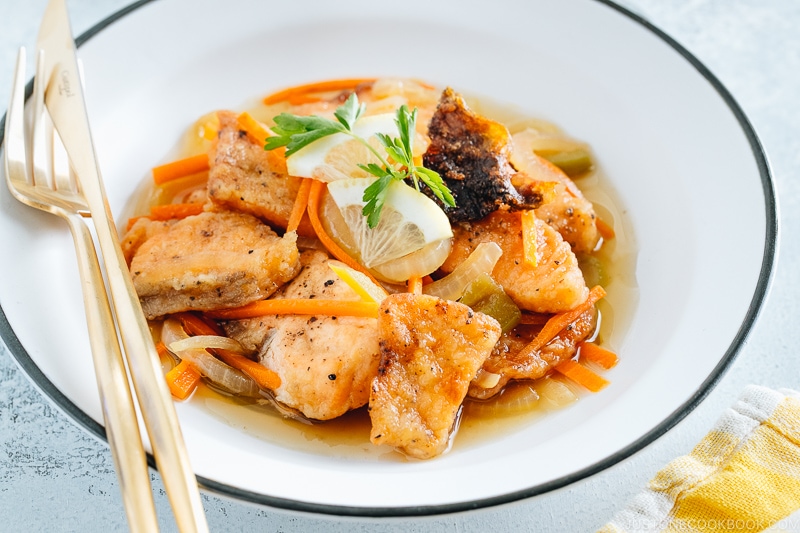
Marinated in soy dashi vinaigrette and served chilled, Salmon Nanbanzuke is a delightful seafood fare to enjoy in the summer. The unique preparation allows the salmon to store for days! You can serve it as an appetizer or a main dish. Just don’t forget to chill your favorite sparkling sake or white wine to go with.
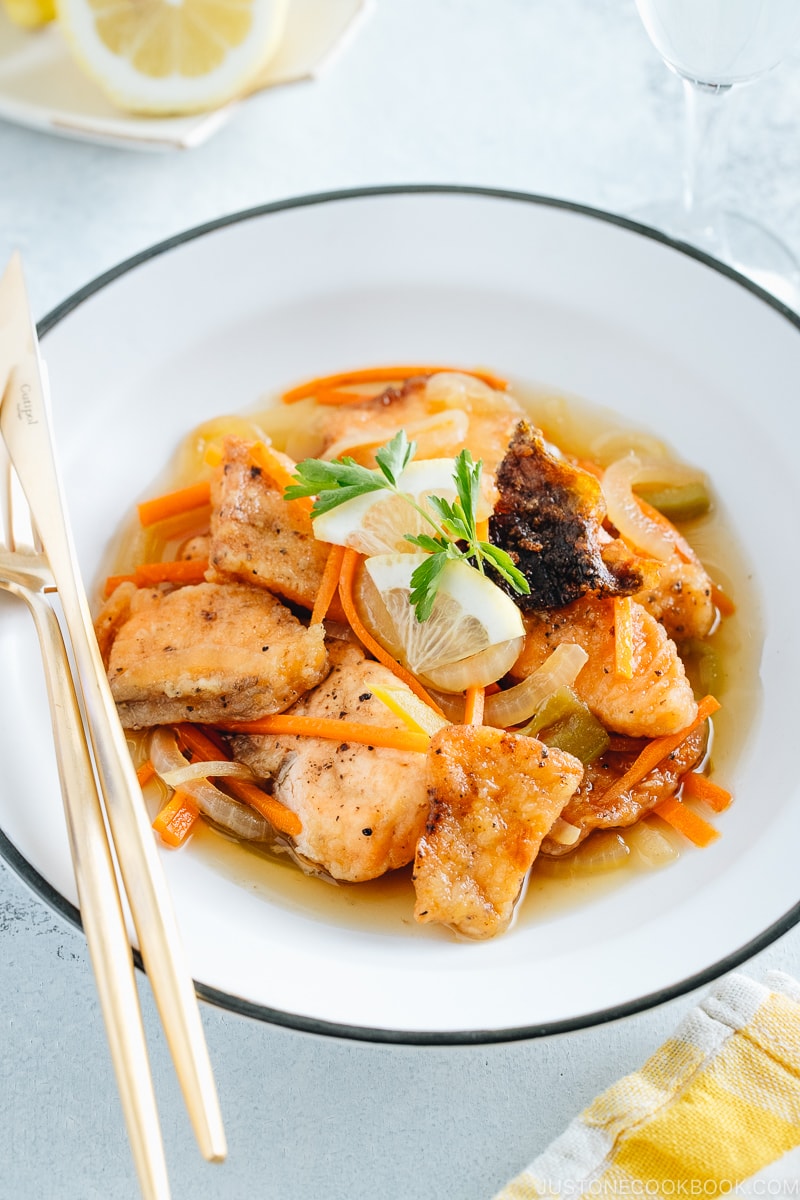
When the weather is warm outside, I crave for a meal with a simple and refreshing taste and this Salmon Nanbanzuke (鮭の南蛮漬け) is easily one of my favorite seafood fares to enjoy.
Nanbanzuke may not be on your radar when comes to Japanese food, but it is actually a popular dish enjoyed both at home and restaurants in Japan. Here, the salmon is first deep-fried and marinated in a tangy sauce along with colorful julienned vegetables. The mixture is then chilled in the refrigerator and served cold. The result is light and incredibly appetizing.
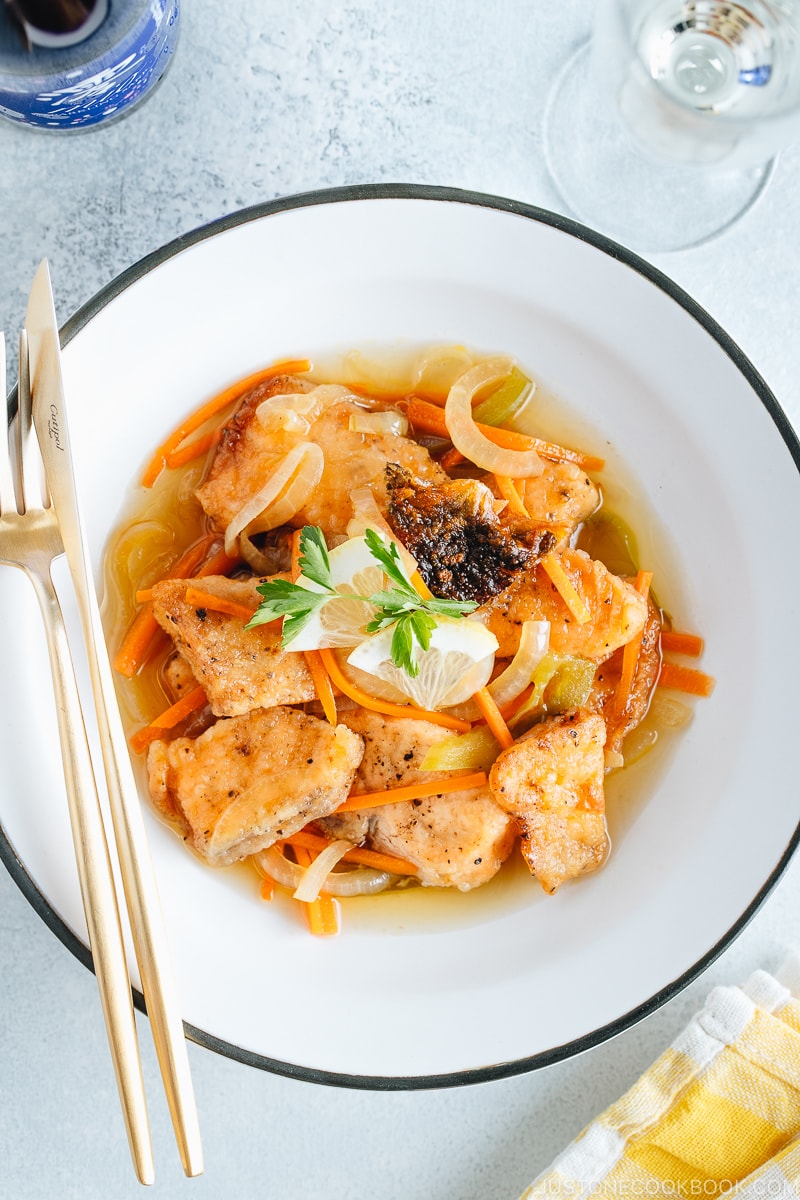
What is Nanbanzuke?
Nanban (南蛮) literary means “southern barbarian(s)” in Chinese-based Japanese words (or kango 漢語 – Chinese loanwords in the Japanese language), originally referring to the people of South Asia and Southeast Asia. In Japan, it was used for the Portuguese, who first arrived in 1543, and later other Europeans who came to visit around the 16th to 17th century.
The word “nanban” also referred to something foreign and exotic, such as nanban kashi (南蛮菓子, foreign sweets) like Catella, or food with exotic spices, marinades, and sauces like nanbanzuke, as in -zuke meaning “being soaked”.
If by any chance you are familiar with Escabeche – a fried fish dish that’s marinaded in a vinegar-based sauce in the Mediterranean and Latin American cuisines – Nanbanzuke is essentially the Japanese interpretation of that. Instead of cider vinegar and spices, we enliven the fish or meat with the concoction of the Japanese pantry such as dashi, mirin, and sake. The unique preparation ultimately helps conserve the dish that it can last for days in the refrigerator.
Besides salmon, you can also make nanbanzuke with these popular ingredients:
- Aji (horse mackerel)
- Saba (mackerel)
- Shishamo (shishamo smelt)
- Wakasagi (Japanese pond smelt)
- Chicken
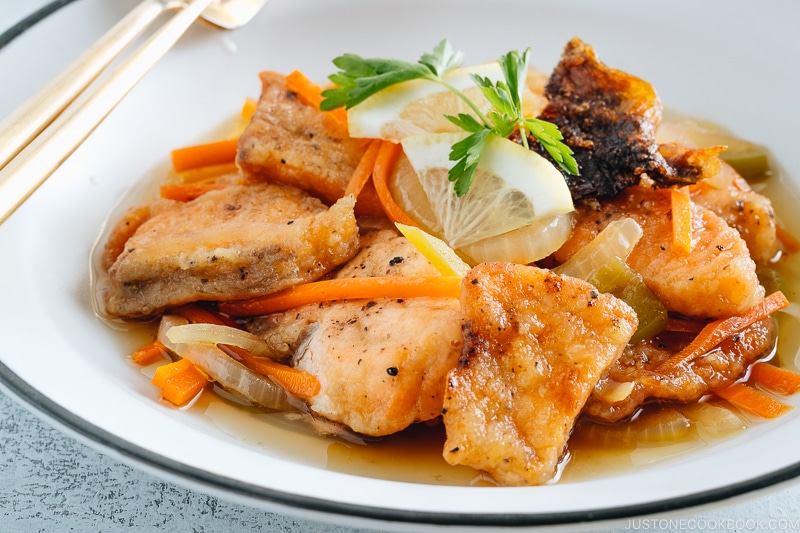
3 Important Tips to Make Delicious Salmon Nanbanzuke
1. Coat the salmon with potato starch or flour.
This crucial step helps to seal in the umami and juice in the fish, and during the deep frying, it acts as a protective shield to prevent the flesh from breaking apart. If you don’t have potato starch, you can sub with corn starch or wheat flour, but don’t skip the coating.
You may remember that I use the same technique for Teriyaki Salmon and Miso Butter Salmon.
2. Adjust the vinaigrette to your liking.
Everyone has a slightly different level of acceptance when it comes to “sour” food. Before finalizing this recipe, I have tested different versions of Nanban Marinade with my family because each of them has an opinion of the comfort level of sourness. So, use my recipe as a guide. Have a taste and adjust the ratio until the vinaigrette tastes right to your liking.
Speaking of vinegar, most Japanese recipes use rice vinegar (米酢). It is milder in taste and not as “sour” as other kinds of vinegar. If you plan to make Sushi Rice (for making sushi), Cucumber Salad, and Japanese dressings, I highly recommend looking for rice vinegar.
For the summertime, I like to use a bit more vinegar for extra tanginess.
3. Marinate the fried salmon while it’s hot.
The most important technique for delicious Nanbanzuke is to marinate the fried salmon as soon as it’s out of the oil. Remove the excess oil by shaking it off and dunk the salmon into the marinade. The hot fried salmon absorbs the flavors most.
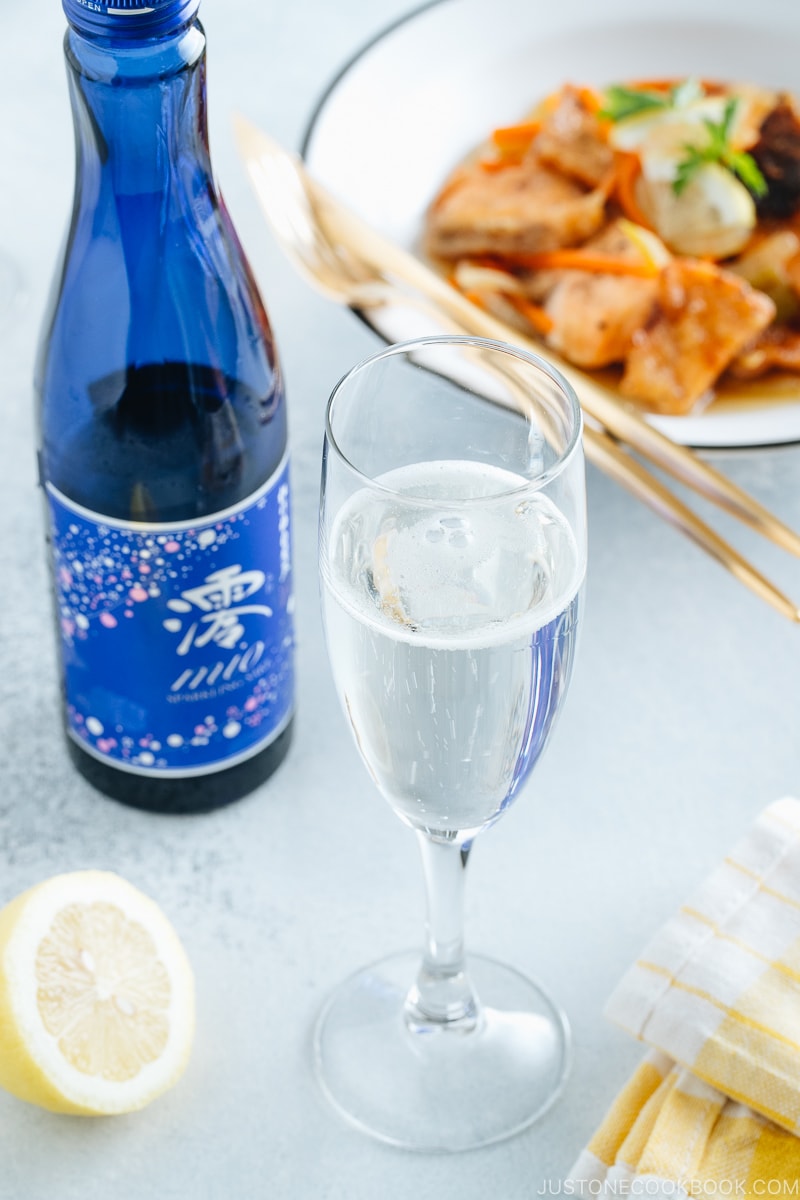
Pairing with Mio
For this Marinated Fried salmon with Vegetables, we paired it with Sho Chiku Bai Shirakabegura MIO Sparkling Sake. The sparkling sake is similar to a fruit cider, with flavors of apple, pear, and summer fruits.
The sweetness and fruitiness of the sake match the vinaigrette really well and the tiny bubbles clean the palate so you’re always ready for the next bite. We love this sparkling sake with summer meal like Salmon Nanbanzuke.
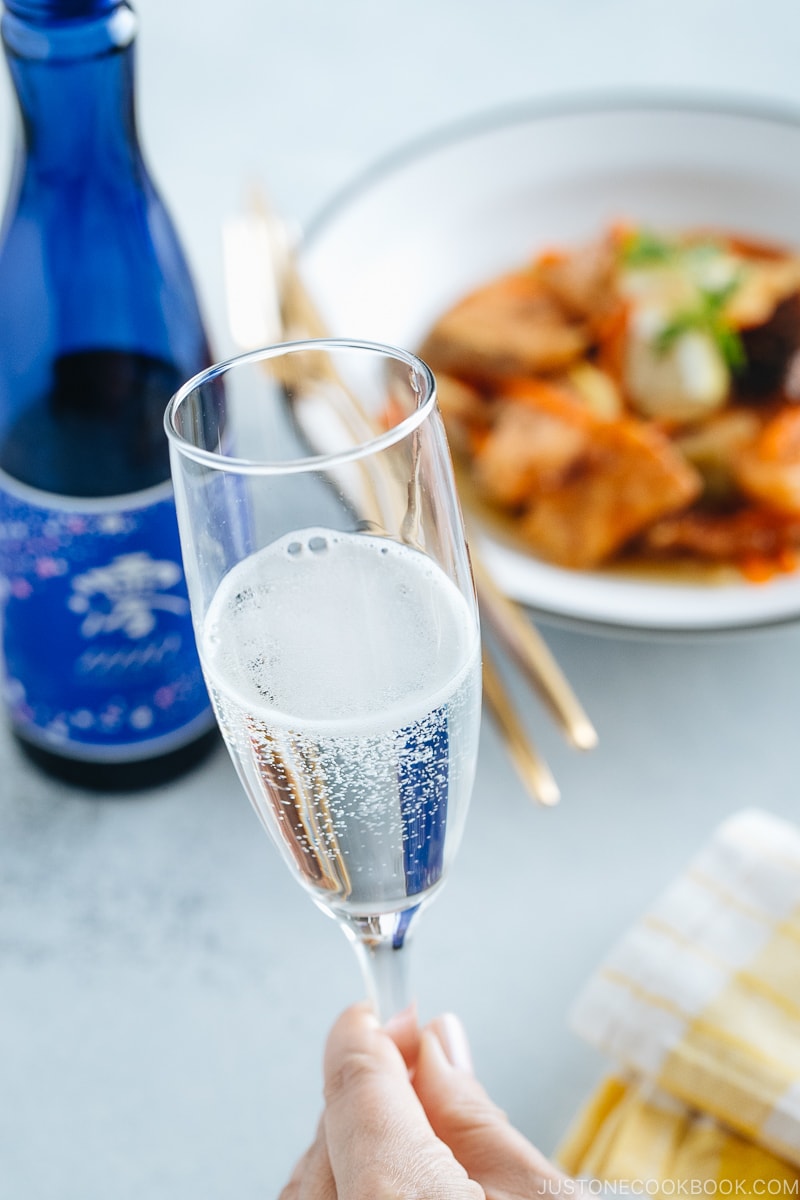
Cheers! I hope this easy salmon dish will be another favorite of yours!
Other Salmon Dishes You May Enjoy
- Teriyaki Salmon
- Salmon Fried Rice
- Miso Butter Salmon
- Salmon in Foil
- Baked Crispy Salmon
- Sanpeijiru (Salmon Miso Soup)

Japanese Ingredient Substitution: If you want to look for substitutes for Japanese condiments and ingredients, click here.
Sign up for the free Just One Cookbook newsletter delivered to your inbox! And stay in touch with me on Facebook, Pinterest, YouTube, and Instagram for all the latest updates.
Salmon Nanbanzuke
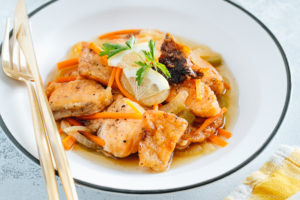
- ½ carrot ((85 g, 3 oz))
- ½ onion ((170 g, 6 oz))
- ½ green bell pepper ((57 g, 2 oz) (I use Japanese “piman” bell pepper))
- ½ cup neutral flavor oil (vegetable, canola, etc) ((for cooking vegetables and salmon))
- 1 lb salmon
- ½ tsp salt (kosher or sea salt; use half if using table salt)
- ¼ tsp freshly ground black pepper
- 4 Tbsp potato starch/corn starch
Nanban Marinade
- 1 cup dashi
- ¾ cup rice vinegar
- 3 Tbsp soy sauce ((I used Usukuchi (light color) soy sauce))
- 3 Tbsp sugar
- 2 Tbsp sake ((I used Sho Chiku Bai Classic Junmai Sake))
- 2 Tbsp mirin ((I used Takara Mirin))
Garnish (Optional)
- lemon slices
- parsley
- Gather all the ingredients.
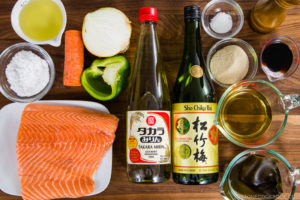
To Make Nanban Marinade
- In a rectangular container with a lid, combine vinegar, dashi (remove kombu), soy sauce, and sugar.
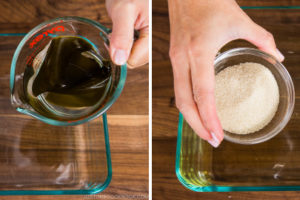
- Add sake and mirin.
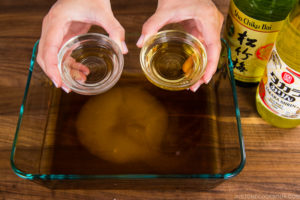
- Cut the carrot into 2 inch pieces and slice into slabs.
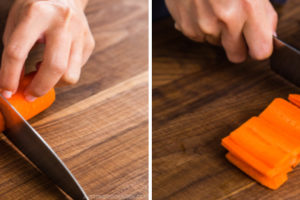
- Then cut the slabs into julienne strips. Thinly slice the onion widthwise (to give texture and remain the shape after cooking).
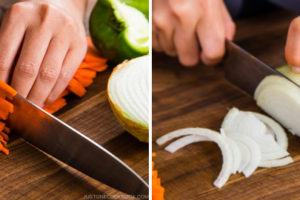
- Remove the seeds from the green pepper and cut into julienne strips.
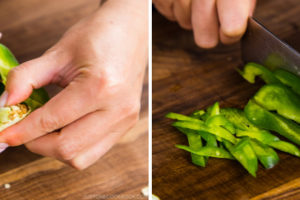
- Heat a large frying pan and when it’s hot, add 1 Tbsp of oil from the ½ cup oil. Add the onion and saute.
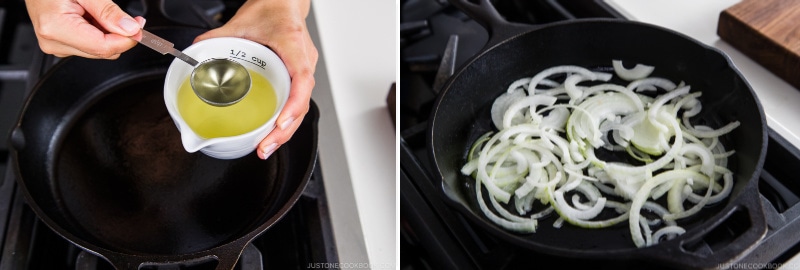
- Once the onions are coated with oil, add the carrot and bell pepper.
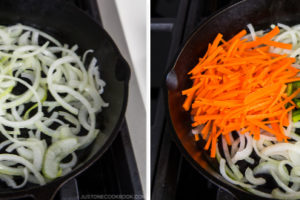
- When the vegetables are coated with oil and wilted but still crisp (don’t overcook), transfer them to the marinade. Set aside.
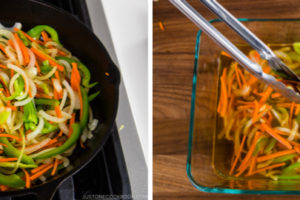
To Prepare Salmon
-
If your salmon has skin, you can easily remove it from the corner by holding the salmon with a knife in one hand and slowly pulling the skin on the other hand as you see below. Salmon skin is really delicious when it's cooked till crispy. I'll show you how to prepare below. For now, set aside on a plate, cover with plastic, and refrigerate.
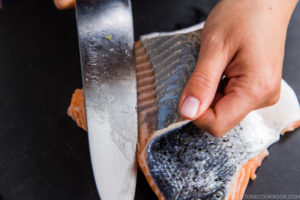
- Once the skin is removed, cut the salmon into a few blocks.
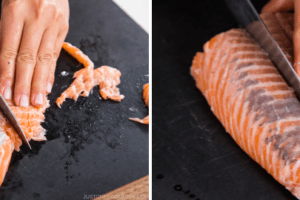
- Then cut each block into bite size pieces, roughly ½ inch thickness.
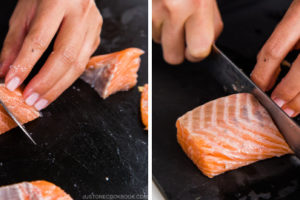
- Season the salmon with pepper and salt.
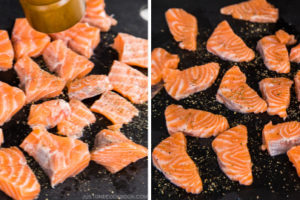
- In the same frying pan, heat the rest of oil over medium heat.
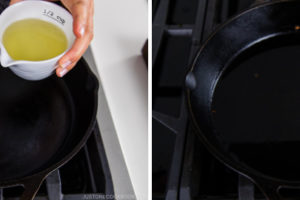
- Sprinkle potato starch over the salmon and coat well.
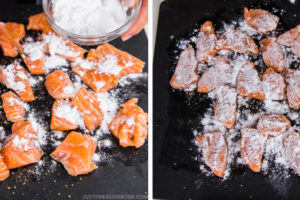
- Remove the excess starch.
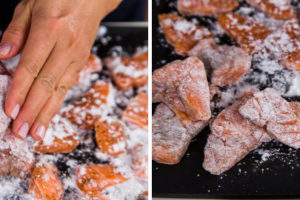
-
When the oil is hot, add the salmon in the pan (Do not crowd the pan as the oil temperature will drop too quickly). Fry until golden brown, about 5 minutes (depending on the thickness of the salmon). You can use this splatter screen to avoid oil splatter.
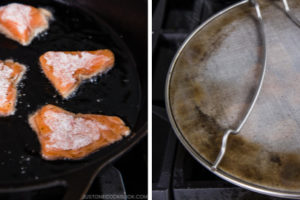
-
Once the salmon is cooked, shake off the oil well and transfer to the marinade while it’s hot.
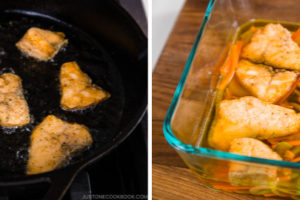
- Continue frying the rest of the salmon.
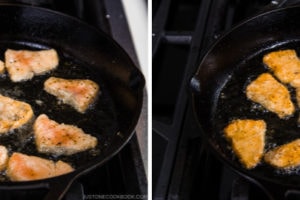
-
When you finish frying all the salmon, put the vegetables in the marinade over the salmon so it will be completely submerged in the marinade.
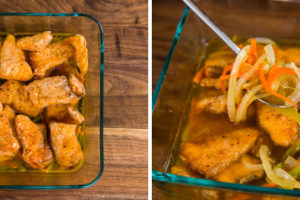
-
Cover the lid or plastic and refrigerate for at least 30 minutes, or preferably overnight.
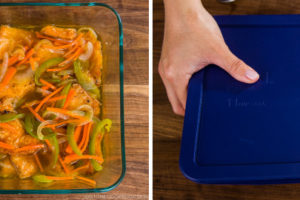
To Serve
-
[Optional] Sprinkle salt on the salmon skin and bake at 325 ºF (160 ºC) in the oven or oven toaster for 30 minutes, or until it's crispy. The skin will cook in its own oil. Once it's crispy, break it into smaller pieces and use them as a decoration when serving.
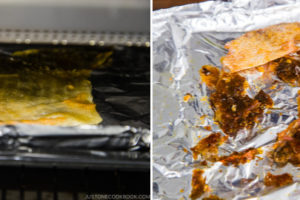
-
Serve the vegetables from the marinade on a plate and top with salmon.
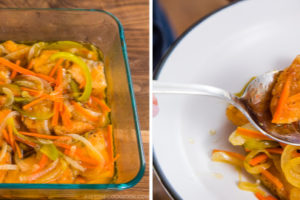
-
Garnish with sliced lemon, parsley, and baked salmon skin. Serve it chilled.
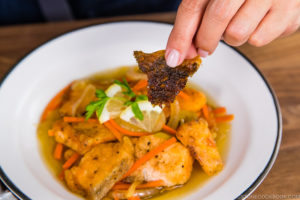
To Store
-
You can keep the dish in the refrigerator for up to 5-6 days.
Recipe by Namiko Chen of Just One Cookbook. All images and content on this site are copyright protected. Please do not use my images without my permission. If you’d like to share this recipe on your site, please re-write the recipe and link to this post as the original source. Thank you.